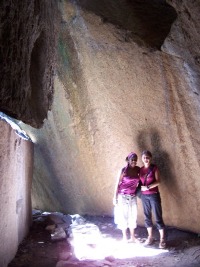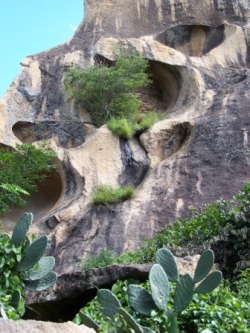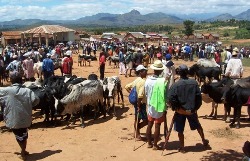

The group of mountains which serves as a stunning backdrop to the reserve is called Telo Mirahavavy or The Three Sisters, and is the site of many natural caves, which have been used as local family tombs for the past two centuries.
The community at Anja has perhaps experienced fewer problems in protecting the land relative to other community reserve ventures because it is a sacred area.

Anja is also a rich cultural site, preserving ancient tombs from the previous two centuries. Family tombs located on the rock faces are in active use to this day, most are extremely difficult to access. Tourists can see two Betsileo tombs on the short loop. Funeral processions require the dead to be tied to a hand-made ladder, and then pulled by a natural rope that is found in the reserve, tenina (Imperata cylindrical), a thick herb with small white flowers, is used to create the needed cord.
Anja Reserve also preserves anthropological evidence of humans in the forest during the time of the Betsileo monarchy. Before 1815, the forest served as a safe haven where around 200 people could support themselves on the food and water and be protected from invaders.

In 1817, The Merina conquered the Betsileo kingdom of Anja. After the French invaded and conquered Madagascar, the people were made to establish villages, farms, and begin to pay taxes. Many of the same clans live in Anja today and are a part of the village association that protects the land of their ancestors.